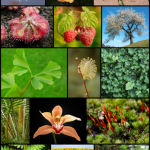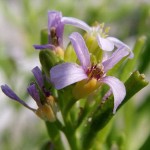Be nice to your plants, they might be sensing you
 Complex social behavior was considered to be unique in animals, especially humans. Now with recent findings, we may need to extend this ability to plants. The old wives tale, “if you talk to your plants, they will grow better” may actually have a string of truth to it. Except they don’t have ears to hear, they have chemical sensors in their roots, like “tongues in the earth.”
Complex social behavior was considered to be unique in animals, especially humans. Now with recent findings, we may need to extend this ability to plants. The old wives tale, “if you talk to your plants, they will grow better” may actually have a string of truth to it. Except they don’t have ears to hear, they have chemical sensors in their roots, like “tongues in the earth.”
Recent studies have shown that plants seem to respond to other neighboring plants, and will alter their growth patterns accordingly. At McMaster University, Ontario Canada, Susan Dudley and Amanda File have demonstrated that plants grown near their siblings are less competitive than when they are grown near unrelated “strangers” of the same plant. The response of plants to competition in their environment has been well documented. They are known to sprout deeper roots for water and nutrients. However, recognition of their own genetic kin has never been seen before.
In their experiment, Dudley and File grew batches of Cakile edentula (the Great Lakes Sea Rocket) together in pots of four. Some were paired with members of the same maternal family and others were paired with unrelated families. Considering that the plants were of the same species, the growth of their root masses were expected to be the same. Surprisingly, a greater mass of roots were grown when plant “strangers” were grown next to each other, while less root mass was ass
ociated with tandem plants of the same maternal line, thus indicating a sharing of resources as opposed to competing for them. The mechanism behind plant kin recognition is still a mystery.
For Agriculture, competition has been known to reduce yields. However these recent findings suggest that kin planted with kin work better together and may produce a more prosperous harvest.
Considering their lack of neurons, any communication between plants is hard to conceptualize. Perhaps more research in this avenue will bring us closer to understanding more beyond our limited “animal scope.”
http://news.nationalgeographic.com/news/pf/858755.html
| Print article | This entry was posted by Elna Carrasco on January 4, 2012 at 6:01 pm, and is filed under DNA Interactive. Follow any responses to this post through RSS 2.0. You can leave a response or trackback from your own site. |

